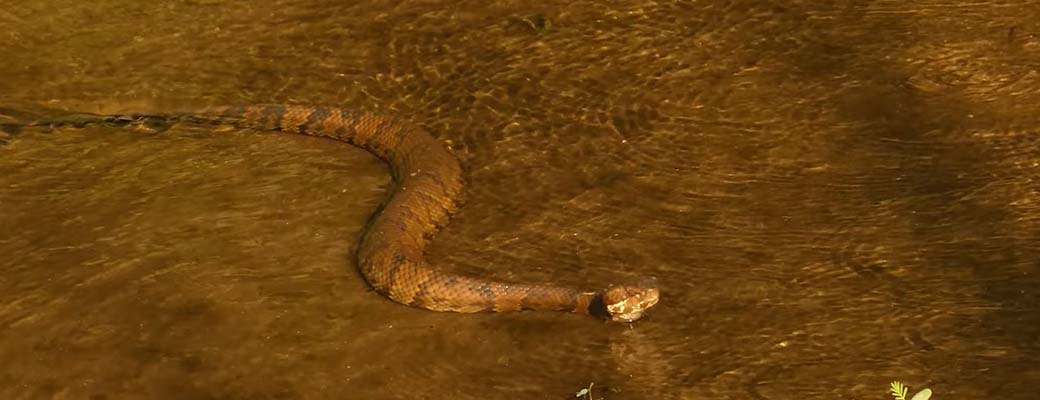The Jacksonville Water Moccasin Snake
Jacksonville water moccasin snake also known as cottonmouth snake are in different varieties. There are North American Water Moccasin, Cottonmouth Moccasin as well as the highland water. The name water moccasin was called due to white colored bright lining on the back. This color is a sign of warning that they are not only predators but also prey to some other animals.

The diet and habitat
Regarding diet, the Florida water moccasin usually kill the animal its feed on and sometimes usually feed on already killed animals found around. But, this is mostly when there is need for nourishment of the body without available animal that is alive. Their main food include: Eggs, toads, snails, alligators, birds and others. Also, they can easily feed on smaller snakes if the need arises. The younger ones usually attract prey using their little tails that move like ant. H main place where this snake is mostly found is semi-aquatic areas and can easily be found within water and fields. You can equally find them around drainage, marshes, swamps and streams.
The appearance
The Jacksonville water moccasin is really a large snake specie measuring from 30 up to 48-inche. It is even possible to find a water moccasin that is as long as 74 inches. The back side is dark olive or black and the belly has paler shade. The older the snake the less visible the pattern and there is dark vertical line and pale snout running up to the nostril.
The behavior
Florida water moccasin active period is mostly in the daytime as they often love basking in the sun. They are known to live mostly inside water and to maintain normal body temperature for optimum digestion they need little sunlight. Though these snakes can be aggressive, they do not normally bite except when they are pushed to the wall.
The biology and life cycle
So many researchers have published information regarding the life cycle of Jacksonville water moccasin. But, none of the publications comes with full backing and confirmation. So, for now the life cycle of this snake is yet to be ascertained and confirmed.
Visit our Jacksonville wildlife removal home page to learn more about us.

